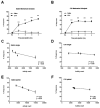Influence of social interaction on nociceptive-induced changes in locomotor activity in a mouse model of acute inflammatory pain: Use of novel thermal assays
- PMID: 28652168
- PMCID: PMC5597466
- DOI: 10.1016/j.brainresbull.2017.06.017
Influence of social interaction on nociceptive-induced changes in locomotor activity in a mouse model of acute inflammatory pain: Use of novel thermal assays
Abstract
Most acute and chronic animal models of pain rely heavily on reflexive assays for evaluating levels of nociception, which involves removing the animal from its normal social environment. Here, we examine and characterize the influence of social interactions on inflammatory pain-evoked changes in movement in two different mouse strains. To produce inflammatory nociception, we injected CFA bilaterally into the hind paws of Balb/c and C3H mice and then recorded exploratory locomotor activity using an automated detector system to first evaluate the effects of social behavior on nociception. Secondly, we determined if carprofen administration altered the effects of social behavior on nociceptive-evoked movement. This methodology was expanded to create a novel thermal activity assay to objectively measure the effect of heat and cold on CFA-evoked animal movement in paired animals. Paired Balb/c and C3H mice exhibited significant hyper-locomotion that lasted for 3h post-injection in Balb/c, but only 1h post-injection in C3H. Single Balb/c mice only showed increased activity for 1h post-injection, while single C3H mice showed no increase. This CFA-induced increase in activity in paired animals was highly inversely correlated with mechanical allodynia as measured using standard Von Frey filaments. Carprofen administration completely blocked this CFA-induced hyperlocomotor activity. Both heat and cold induced a significant increase in locomotor activity in paired mice injected with CFA, while having no effect on activity in control mice injected with saline. The results presented here indicate that social interactions greatly influence inflammatory pain-induced changes in locomotor activity and indicate that the use of movement-based assays to evaluate nociception in paired mice may provide an alternative and more sensitive method to quantify nociception and characterize novel analgesic effects over time in the context of social interactions in rodent models of pain.
Copyright © 2017 Elsevier Inc. All rights reserved.
Conflict of interest statement
Figures






Similar articles
-
Persistent, comorbid pain and anxiety can be uncoupled in a mouse model.Physiol Behav. 2015 Nov 1;151:55-63. doi: 10.1016/j.physbeh.2015.07.004. Epub 2015 Jul 10. Physiol Behav. 2015. PMID: 26166157
-
The analgesic efficacy of morphine varies with rat strain and experimental pain model: implications for target validation efforts in pain drug discovery.Eur J Pain. 2019 Mar;23(3):539-554. doi: 10.1002/ejp.1327. Epub 2018 Nov 9. Eur J Pain. 2019. PMID: 30318662 Free PMC article.
-
Morphine antinociception on thermal sensitivity and place conditioning in male and female rats treated with intraplantar complete freund's adjuvant.Behav Brain Res. 2018 May 2;343:21-27. doi: 10.1016/j.bbr.2018.01.031. Epub 2018 Feb 3. Behav Brain Res. 2018. PMID: 29378294
-
Behavioral outcomes of complete Freund adjuvant-induced inflammatory pain in the rodent hind paw: a systematic review and meta-analysis.Pain. 2022 May 1;163(5):809-819. doi: 10.1097/j.pain.0000000000002467. Pain. 2022. PMID: 34510137 Free PMC article.
-
Current Methods to Investigate Nociception and Pain in Zebrafish.Front Neurosci. 2021 Apr 8;15:632634. doi: 10.3389/fnins.2021.632634. eCollection 2021. Front Neurosci. 2021. PMID: 33897350 Free PMC article. Review.
Cited by
-
Pain influences food preference and food-related memory by activating the basolateral amygdala in rats.Exp Brain Res. 2021 Jan;239(1):79-93. doi: 10.1007/s00221-020-05961-1. Epub 2020 Oct 26. Exp Brain Res. 2021. PMID: 33104830
-
Microbiome depletion prior to repeat mild TBI differentially alters social deficits and prefrontal cortex plasticity in adolescent and adult rats.iScience. 2024 Mar 2;27(4):109395. doi: 10.1016/j.isci.2024.109395. eCollection 2024 Apr 19. iScience. 2024. PMID: 38510122 Free PMC article.
-
Pharmacological validation of voluntary gait and mechanical sensitivity assays associated with inflammatory and neuropathic pain in mice.Neuropharmacology. 2018 Mar 1;130:18-29. doi: 10.1016/j.neuropharm.2017.11.036. Epub 2017 Nov 27. Neuropharmacology. 2018. PMID: 29191755 Free PMC article.
-
Social Buffering as a Tool for Improving Rodent Welfare.J Am Assoc Lab Anim Sci. 2022 Jan 1;61(1):5-14. doi: 10.30802/AALAS-JAALAS-21-000006. Epub 2021 Dec 16. J Am Assoc Lab Anim Sci. 2022. PMID: 34915978 Free PMC article.
-
An effective and concise device for detecting cold allodynia in mice.Sci Rep. 2018 Sep 18;8(1):14002. doi: 10.1038/s41598-018-31741-7. Sci Rep. 2018. PMID: 30228362 Free PMC article.
References
-
- Chaplan SR, et al. Quantitative assessment of tactile allodynia in the rat paw. J Neurosci Methods. 1994;53(1):55–63. - PubMed
-
- Hargreaves K, et al. A new and sensitive method for measuring thermal nociception in cutaneous hyperalgesia. Pain. 1988;32(1):77–88. - PubMed
-
- Randall LO, Selitto JJ. A method for measurement of analgesic activity on inflamed tissue. Arch Int Pharmacodyn Ther. 1957;111(4):409–19. - PubMed
MeSH terms
Substances
Grants and funding
LinkOut - more resources
Full Text Sources
Other Literature Sources

